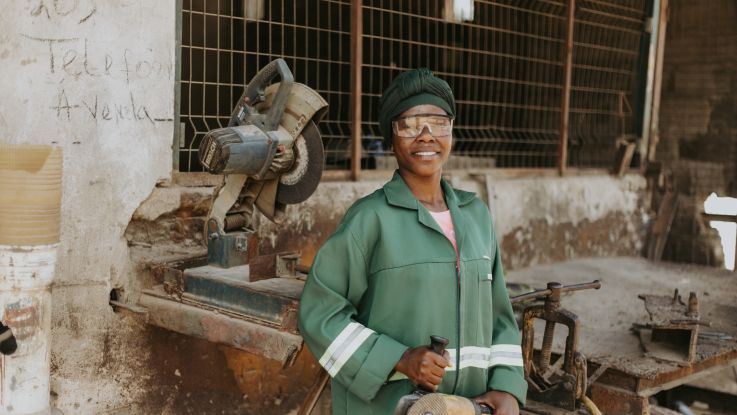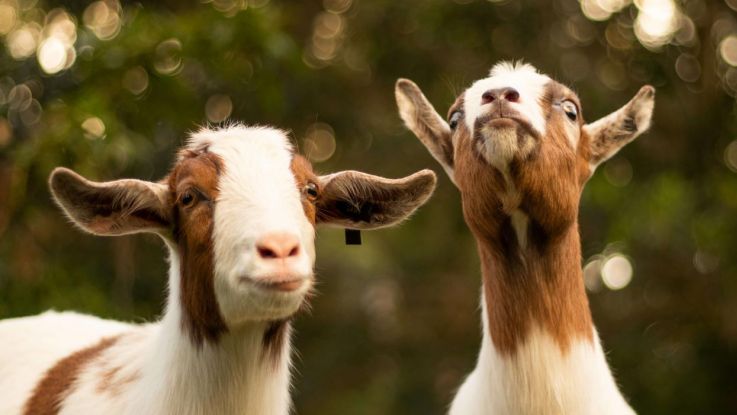Traumatised by memories of war: the children with PTSD
29 November 2017
Exposed to dead bodies, witness to acts of violence - or even attacked themselves - children living in conflict often develop Post Traumatic Stress Disorder (PTSD). In the occupied Palestinian territory, ActionAid is providing psychosocial support to help children and their families recover from the damaging effects of trauma.
Nine-year-old Dima lives very close to the border in Gaza - an area where some of the heaviest fighting occurred in the conflict of 2014, and like many children she has witnessed unimaginable atrocities. Dima's mother told us that she is prone to bed-wetting and has relentless nightmares that keep her awake all night.
Dima attends an ActionAid family support centre in Gaza, which offers pyschosocial activities for children who have been affected by the conflict, and legal help to women who are affected by violence or divorce.
Noha is a psychologist at the centre; she runs art- and drama-based activities to help children overcome their trauma when it is too difficult for them to talk directly about their experiences.
"They draw pictures of what they have been through, it helps them to process the experience," Noha says.
"We can talk about it in their sessions. It helps to be able to look at it together. To understand what is inside of them – sometimes at the beginning they can’t always say what is inside of them. It’s like they can find themselves."
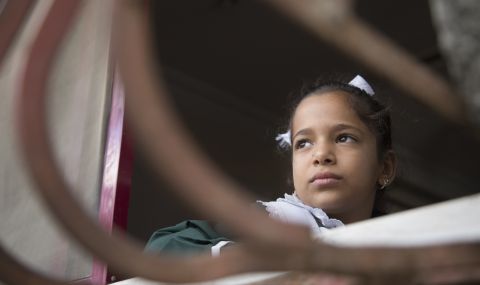
Dima attends psychosocial counselling provided by ActionAid .
Post Traumatic Stress Disorder (PTSD) in children
One of the main symptoms of Post Traumatic Stress Disorder is a dissociation from one's surroundings. When faced with unbearable threats during conflict, children like Dima 'check out' emotionally, becoming numb and absent.
On Dima's first visit to the family centre she was very quiet and didn’t speak to anyone; she just sat by herself in silence. However, Dima is slowly becoming able to express her feelings by drawing pictures, based on what she dreams about at night.
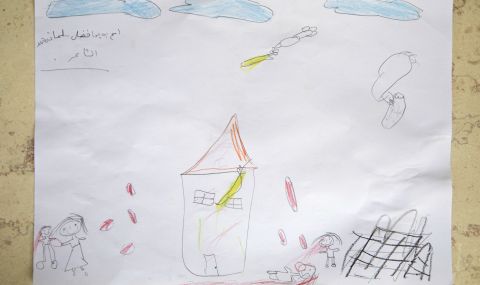
Dima's drawing shows the level of PTSD she is suffering from .
One of Dima's drawings shows a fighter plane flying overhead, dropping missiles directly onto her house and father. Her father lies dead on the ground while she watches, her gaze drawn in red pencil, while she stands by a black fence. On the other side of the bombed house, Dima stands with her mother, holding her hand as red blood droplets fall next to them.
While the horrors Dima has witnessed are clear from her pictures, her counsellor also says that the overt use of black and red colours in her drawing give a clear indication of the severity of the PTSD that Dima is suffering from.
Reliving the trauma of war
Although armed conflict in Gaza ended in 2014, fighter planes still frequently fly overhead, and at these times, Dima and other children at the centre often start screaming and hiding under tables or chairs.
Amna, another psychologist at the family centre, has witnessed this at first hand and says it is a natural reaction for those that have not received sufficient counselling after a severe trauma, as they are reliving the memories of the bombings they suffered from planes in the war: "The sound of the fighter planes reactivates their trauma - they are expecting the war will come once again."
The sound of the fighter planes reactivates their trauma - they are expecting the war will come once again.”
It is still early days in Dima’s treatment, but her counsellors have started seeing progress in her behaviour, both in the one-to-one sessions and in group activities. Each week, Dima is starting to involve herself more and more, and her mother has told us that she is having fewer nights of wetting the bed.
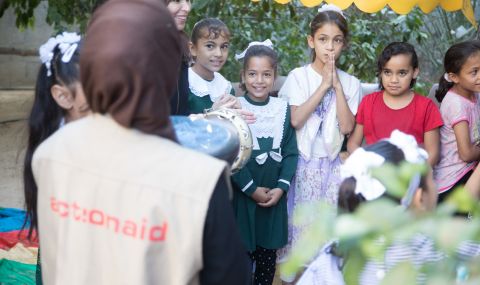
Dima takes part in group activities at the ActionAid psychosocial centre .
The long road to recovery from childhood trauma
But recovery from trauma can be a lengthy process, and Dima’s counsellors say that she still needs many more sessions to recover fully from PTSD, and feel more safe and secure.
Noha told us about the different stages of their approach when working with traumatised children. “In the beginning, we try to build their confidence. We are basically building a relationship with them, so we don’t talk about everything. Stage two is about encouraging them to be in different sessions - the group session first because it is less stressful for them, then the individual sessions too.
"The third stage is about helping them to express their emotional feelings - the happiness, the sadness," she continues. "They express what is inside. When they do this, it is a sign of security - that they don’t have to hide things. When they are alone with the psychologist it’s like they can release their feelings.”
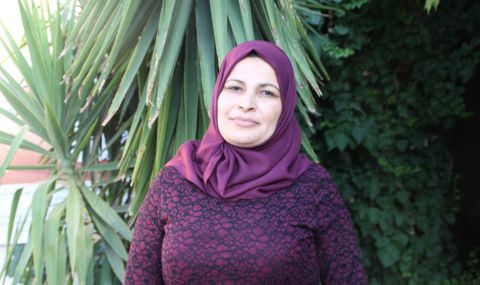
Samaher Abuzayed works at the psychosocial centre .
ActionAid's family centres are the only sources of PTSD support to families in the area.
How you can support children with trauma
Samaher Abuzayed also works at the family centre and told us how ActionAid is working to ensure children like Dima can recover from their trauma. “Our main goal is to make sure the children are protected, safe and to give a proper psychological intervention to help them. We work with the girls so they can work out how to protect themselves, both now and in the future.”
“My heart is broken for these girls. My heart is broken inside. All the time I am thinking, how can I minimise their suffering? I try and spend more time with them, more than we have time for according to the sessions. They need more support.”
But many children who have experienced unimaginable horrors in the occupied Palestinian territory are still not receiving any trauma counselling, and millions of girls around the world are living in fear as a consequence of conflict in their country.
“My heart is broken for these girls," says Noha. "My heart is broken inside. All the time I am thinking, how can I minimise their suffering? I try and spend more time with them, more than we have time for according to the sessions. They need more support.”
With your help, we can provide the support that girls like Dima so urgently need.
